The Romanian deadlift (RDL) should be a staple in (almost) everyone’s workout program. Whether your goals align with physique development, enhancement of athletic performance, or general health, we think the RDL is a tool worth having in your arsenal.
You can perform this exercise with limited equipment in your garage or home gym, or with heavy weights in a fully-furnished training facility. The versatility of this exercise is limitless, but it begs the question: How do you perfect your Romanian deadlift form? Follow along to learn how to execute the RDL so it can help you move the needle closer to your goals.
Recent Updates: BarBend’s former Director of Content, Andrew Gutman, updated this guide to more directly align with a reader’s search intent. That is, more information about the exercise’s variations, alternatives, and benefits, and tighter explanations for ancillary information. He also updated the language to be more specific and illustrative.
How To Do the Romanian Deadlift
Let’s begin with input from one of our Experts. “Proper form is essential in the Romanian deadlift to maximize muscle engagement and minimize the risk of lower back injury. Focus on maintaining a neutral spine and controlled movement,” says Masi regarding the general principles of the Romanian deadlift.
You can think of the barbell Romanian deadlift as the top three-quarters of a standard deadlift. Instead of lifting the weight off the floor and standing up with it, you begin standing and slowly hinge until the weight is roughly shin level.
Focusing on the eccentric (lowering) phase of the movement and reducing the range of motion slightly places more tension on your posterior muscles, making the RDL a prime muscle-building exercise.
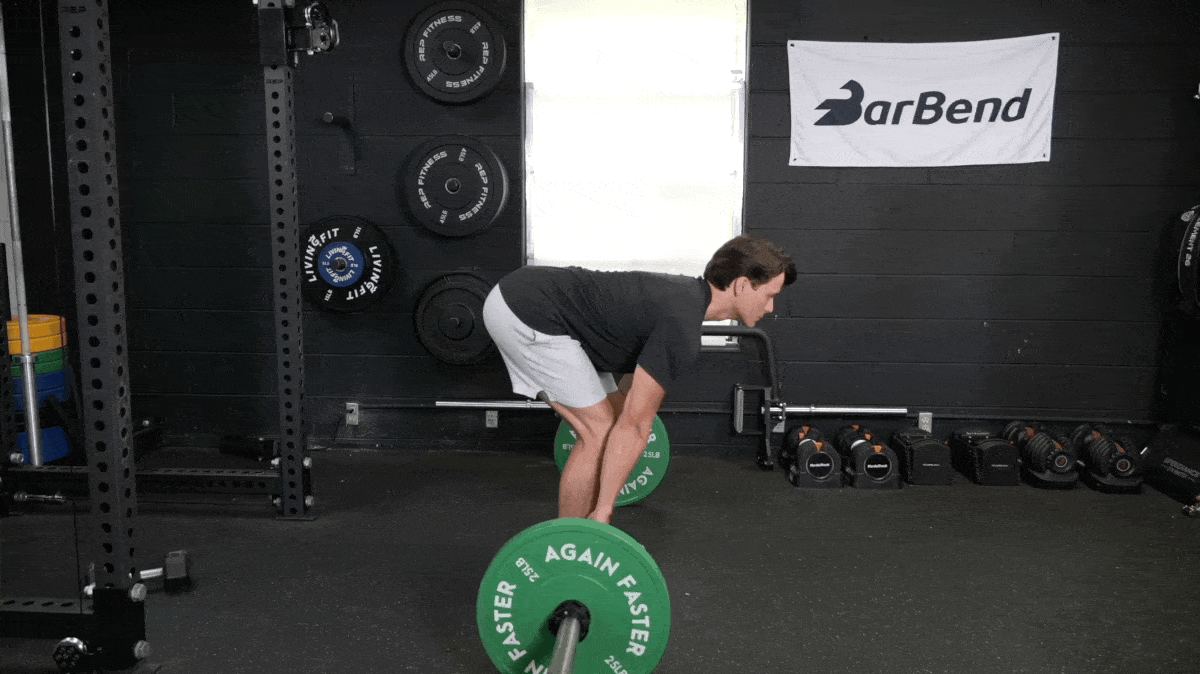
- Step 1 — Position the barbell loaded with the appropriate number of weight plates directly in front of you on the floor, with an inch of space between your shins and the bar. Situate your feet underneath your hips and grip the bar slightly wider than shoulder width.
- Step 2 — As you grip the bar, tighten your entire back. Even though your upper back muscles don’t travel through a long range of motion, it’s crucial to engage them to keep a tight core and the bar close to your body. Deadlift the bar up to a standing position.
- Step 3 — Shoot your hips backward. Begin leaning forward while keeping the bar close to your body with a flat back and your chest up. Maintain a slight bend in your knees. Continue to hinge your torso forward until you feel a stretch in your hamstrings.
- Step 4 — Push your hips to the bar. As you move through the second half of the exercise, dig your legs into the ground, pull your chest up, and squeeze your glutes to bring your hips back to the bar to return to your upright position.
Sets and Reps
If your goal is muscle growth (aka hypertrophy), we suggest performing three warm-up sets of 10 reps, six reps, and four reps with increasingly heavy weight. Choose a weight you can lift for no more than 10 reps. Perform three working sets of 8-10 reps.
[Read More: How Much Does a Barbell Weigh?]
If you’re more concerned with building strength, follow the same warm-up protocol and choose a weight you can lift for no more than eight reps. Do four working sets of six reps.
Modifications
- Make it easier: You can modify the Romanian deadlift by doing the dumbbell Romanian deadlift or using kettlebells instead of a barbell. If you’re having trouble with the range of motion, place a weight bench between your legs for the barbell to rest on and prevent it from dropping too low.
- Make it harder: Stand on a 45-pound bumper plate to extend the range of motion of the movement. Adding more weight or more reps is also a simple yet effective way to increase the difficulty of this exercise.
Video Guide
Check out our video instructional, featuring BarBend’s former Training Editor, Jake Boly.
Romanian Deadlift Variations
- Banded Romanian Deadlift: This variation will be helpful if you have difficulty engaging your glutes. You’ll attach two light-to-moderate resistance bands between the barbell and the pillars of a squat rack. Bands are an effective method to help reinforce proper engagement of your glutes and strengthen quality movement patterns. This variation also makes for a stellar teaching tool.
- Trap Bar Romanian Deadlift: With a standard barbell, you’ll generally use a pronated (palms down) grip, but a trap bar affords you a more ergonomic grip option and places the load in line with your center of mass. Additionally, the shifted grip position will alter the distribution of the load across your body; you’ll find a bit more tension on your quads and core and a bit less on your back if you use a trap bar.
- Deficit Romanian Deadlift: This variation will give you a greater range of motion at the hip joint. It enables you to increase the eccentric loading stress placed upon the glutes and hamstrings.
Romanian Deadlift Alternatives
If you’re having a difficult time nailing down the technique of the RDL, here’s a list of possible alternatives for you to play with instead. They mimic the Romanian closely, but add some flavor to the movement.
Good Morning
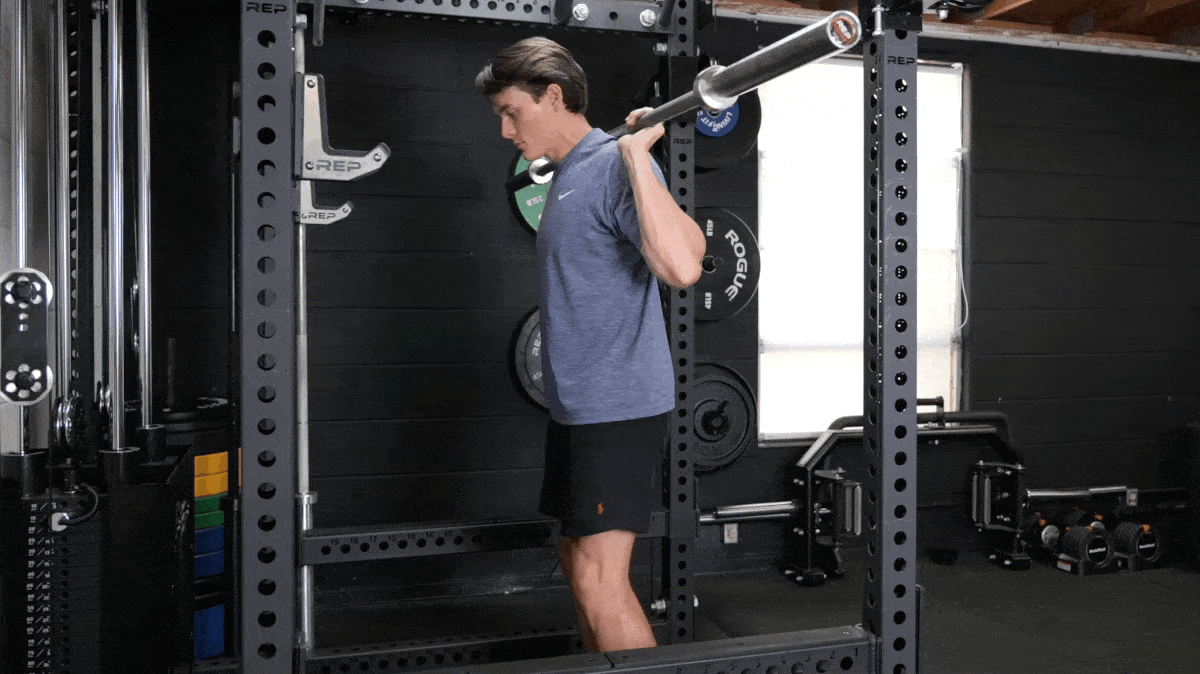
[Read More: Good Morning vs Deadlift – Pros and Cons for Strength and Muscle Building]
- Unrack a bar from a squat rack by placing it on your traps and assume your standard Romanian deadlift stance with your feet under your hips.
- Instead of doing a squat, unlock your hips and slowly push them backward while keeping your knee mostly straight.
- Tip over until you feel a big stretch throughout your backside or until your torso becomes parallel with the floor. Then, return to a standing position.
Hip Thrust
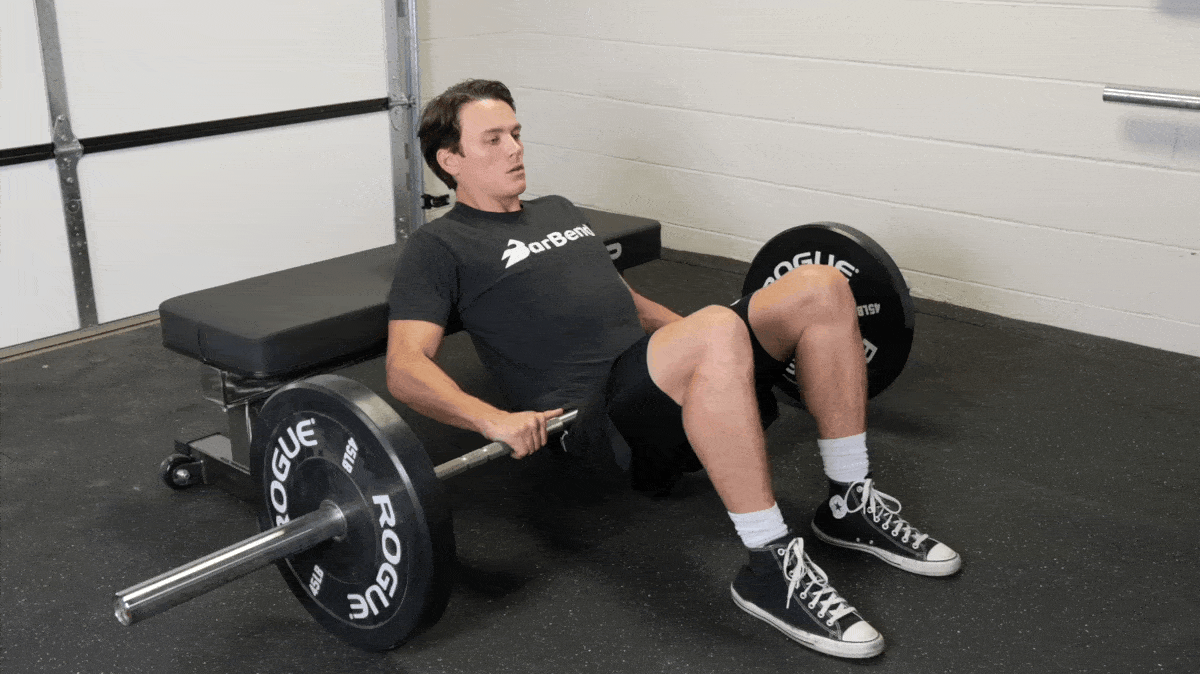
[Read More: Hip Thrust Vs. Back Squat for Glute Development]
- Sit with your upper back against the box or bench and roll a loaded barbell toward you until it is directly above your hips.
- Shuffle your feet toward your butt and plant them on the floor with your legs bent.
- Grab the bar, inhale, and contract your butt to push the bar off the floor until your hips fully extend.
Muscles Worked by the Romanian Deadlift
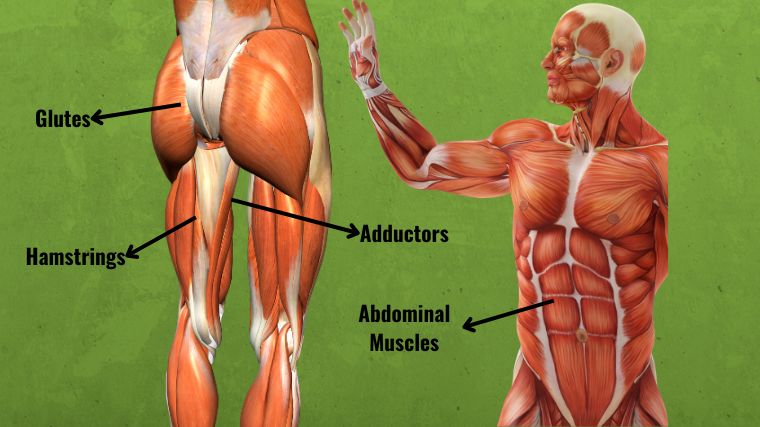
[Read More: The Best Leg Exercises for Muscle & Strength, According to a PhD]
- Glutes: Your butt is made up of the gluteus minimus, gluteus medius and gluteus maximus. The glutes assist you during the second half of the RDL as you attempt to return to your starting position by extending your hips to lockout. (2)
- Hamstrings: As one of the primary posterior chain muscles, your hamstrings are composed of the biceps femoris, semimembranosus, and semitendinosus. They’re responsible for embracing most of the force being loaded onto them. The hamstrings and glute muscles will extend your hips to return you to your starting position. (2)
- Adductors: The adductor muscles’ constituents include the pectineus, adductor brevis, adductor longus, adductor magnus, and gracilis. These muscles make up a majority of the inner portion of your thigh muscle. They assist you in the hinging phase of an RDL and provide internal stability of your pelvis during the lockout phase of the RDL.
- Abdominal Muscles: The role of your core musculature during the RDL is protection, specifically around the spine. You can increase your intra-abdominal pressure and brace for the load by inhaling a large amount of air and holding it while simultaneously flexing the muscles of your abdomen to be as tight and rigid as possible. (3)(4)
Benefits of the Romanian Deadlift
Whether your goal aligns more with performance, physique, or health, you may find utility in performing the RDL.
Bigger Legs and Glutes
The primary muscles involved in the RDL are the glutes and hamstrings. Mechanical tension is one of the main mechanisms of hypertrophy. Mechanical tension happens as muscle fibers are stretched while under the load of, say, a barbell. The more you pull on this lever, the more chances a muscle can grow.
A Stronger Lower Body
Strength is the byproduct of three elements: muscular hypertrophy, neuromuscular adaptation, and skill acquisition. The more sets and reps and exposure you have to the RDL, no matter how much weight is in your hands, the better and stronger you’ll get.
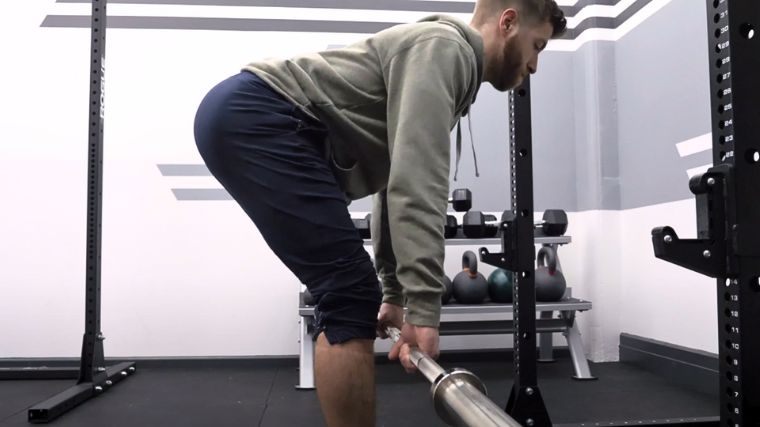
The Romanian deadlift is a fantastic option for simultaneously strengthening your legs and back, as long as you maintain good form and continue to implement progressive overload. (5)(6)
“Incorporating Romanian deadlifts into your routine can enhance posterior chain stability and strength, which are crucial for overall athletic performance and injury prevention,” says Masi. More on that here:
May Prevent Injury
Developing a more robust pair of hammies will provide you with a more favorable hamstring-to-quadricep (H:Q) ratio, meaning that you may lower the risk of developing a hamstring injury or damaging any ligaments within the knee. In sports, it’s essential to be good at what you do; but you can only perform well if you stay healthy and injury-free. (7)
Increased Flexibility
Resistance training is an incredibly effective tool to increase your muscular flexibility, mainly through an exercise’s eccentric phase. During the RDL, for you to hinge, your hamstrings will have to lengthen while absorbing the load. As a result, with every loaded stretch, the flexibility of your hamstrings should increase over time. (5)
“The Romanian deadlift not only builds muscle but also improves hip hinge mechanics, which are fundamental for many functional movements and athletic activities,” Masi notes.
Common Romanian Deadlift Mistakes
Not every rep will be in textbook form, but it’s important to maintain structural integrity as long as possible. You must check in with yourself to make sure you’re lifting as safely as possible and know when to pull the cord. Here are a few things that can go wrong during the RDL.
Not Keeping the Bar Close to Your Shins
It’s difficult to pick up a laundry basket when you have to have a whole foot of space between you and the basket, right? The same idea applies when you’re executing the RDL. The further the bar drifts away from your body, the heavier it will begin to feel, potentially affecting your balance and muscular activation. The closer you can keep the bar to you, the more leverage you’ll have when lifting it.
Excessive Back Rounding
Excessive back rounding may occur for several reasons: A potential explanation is that you might have the barbell positioned too far away from you, or you’re performing the RDL with poor technique, allocating unwanted and unnecessary tension onto your lower back, which may increase the risk of injury. (1) For this reason, keep your back flat and lift using your legs. The weight is probably too heavy if you notice your back rounding excessively.
Too Much Knee Bend
Excessive knee bending will begin to alter the exercise and make it resemble a conventional deadlift, thus emphasizing different muscle groups. This may lead to the loss of desired benefits from the RDL. Keep an eye on your knees; they should be slightly bent throughout the movement, but you shouldn’t lift with your quads.
Build a Better Backside
There’s a good chance that you can include the RDL or one of its many variations into your training arsenal, no matter where you fall on the weight room spectrum. The Romanian deadlift can satisfy the goals of beginners and professional athletes alike. Whether you’re after physique development, better athletic performance, or just want to feel a bit better daily.
The Romanian deadlift has stood the test of time. Include it in your workout program, and you’ll become just as timeless and immovably strong.
Frequently Asked Questions
How do I know if I’m performing Romanian deadlifts safely?
If you’re building muscle and/or getting stronger via heavier weights on your barbell, and you don’t experience any notable pain during the execution of the Romanian deadlift, it’s a safe bet that you’re performing the exercise correctly.
How do I protect my back during RDLs?
Ensure you’re correctly bracing your core when performing all hinge-based exercises. Think of your abdominal muscles as much more than just the six muscles in front of you. It’s more of a protective cushion for your spine and organs shaped like a cylinder around the trunk of your body. As long as you’re bracing your core, using proper lifting mechanics, and lifting appropriate loads for your skill or strength level you should be in good shape.
How often should I do RDLs?
The more you expose yourself to this movement, the more you target lower posterior chain muscles. As a loose guideline, performing any variation of an RDL of your choosing 1-3x per week should do the trick without being overkill. After that, you can switch up every 4-6 weeks!
References
- Eltoukhy M, Travascio F, Asfour S, Elmasry S, Heredia-Vargas H, Signorile J. Examination of a lumbar spine biomechanical model for assessing axial compression, shear, and bending moment using selected Olympic lifts. J Orthop. 2015 May 18;13(3):210-9. doi: 10.1016/j.jor.2015.04.002. PMID: 27408480; PMCID: PMC4925752.
- McAllister MJ, Hammond KG, Schilling BK, Ferreria LC, Reed JP, Weiss LW. Muscle activation during various hamstring exercises. J Strength Cond Res. 2014 Jun;28(6):1573-80. doi: 10.1519/JSC.0000000000000302. PMID: 24149748.
- Blazek D, Stastny P, Maszczyk A, Krawczyk M, Matykiewicz P, Petr M. Systematic review of intra-abdominal and intrathoracic pressures initiated by the Valsalva manoeuvre during high-intensity resistance exercises. Biol Sport. 2019 Dec;36(4):373-386. doi: 10.5114/biolsport.2019.88759. Epub 2019 Oct 17. PMID: 31938009; PMCID: PMC6945051.
- Stokes IA, Gardner-Morse MG, Henry SM. Intra-abdominal pressure and abdominal wall muscular function: Spinal unloading mechanism. Clin Biomech (Bristol, Avon). 2010 Nov;25(9):859-66. doi: 10.1016/j.clinbiomech.2010.06.018. Epub 2010 Jul 23. PMID: 20655636; PMCID: PMC2949466.
- Marušič J, Vatovec R, Marković G, Šarabon N. Effects of eccentric training at long-muscle length on architectural and functional characteristics of the hamstrings. Scand J Med Sci Sports. 2020 Nov;30(11):2130-2142. doi: 10.1111/sms.13770. Epub 2020 Jul 30. PMID: 32706442.
- Schoenfeld BJ. The mechanisms of muscle hypertrophy and their application to resistance training. J Strength Cond Res. 2010 Oct;24(10):2857-72. doi: 10.1519/JSC.0b013e3181e840f3. PMID: 20847704.
- Dedinsky R, Baker L, Imbus S, Bowman M, Murray L. EXERCISES THAT FACILITATE OPTIMAL HAMSTRING AND QUADRICEPS CO-ACTIVATION TO HELP DECREASE ACL INJURY RISK IN HEALTHY FEMALES: A SYSTEMATIC REVIEW OF THE LITERATURE. Int J Sports Phys Ther. 2017 Feb;12(1):3-15. PMID: 28217412; PMCID: PMC5294945.